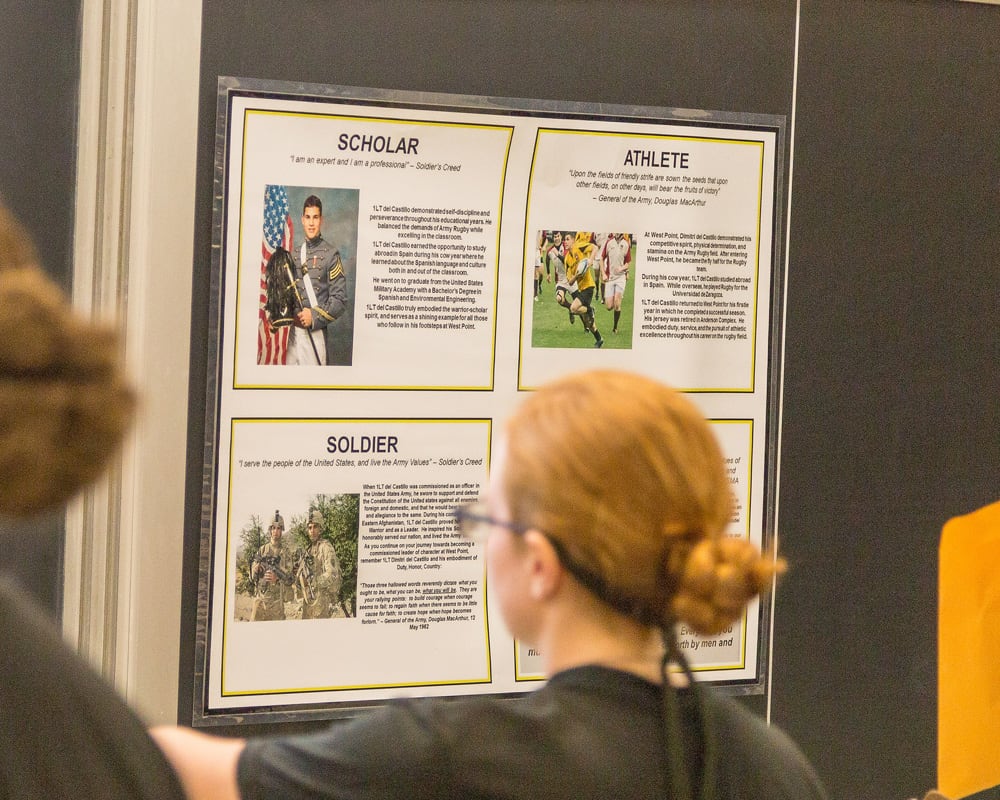Most of us try to go through life without being zapped by a Taser, but security forces airmen often volunteer to ride the lightning as part of their Taser training.
Unlike other training for less-than-lethal weapons, getting tased is a "100 percent voluntary," experience, said Lt. Col. Melissa Brown, chief of the security forces training policy branch.
"When you say 'voluntary' in the military, if you have very much experience with us, we tend to laugh at that word because 'voluntary' kind of turns into 'voluntold' or 'highly encouraged;' but we do explain to them that it is good for them to understand exactly what it's going to do and give them confidence that if they're in a situation where they are going to use it, that it is going to work very effectively for them — but we don't put any pressure beyond that for them."
Security forces first started carrying Tasers in 2005, according to the Air Force. The weapon fires two electrodes into the human body in order to administer a five-second jolt, initially of 50,000 volts.
"It is Air Force policy that whenever we arm a security forces member with — I will call it a lethal weapon … an M-16, an M-9, any type of a weapon — in order for them to draw that weapon, they must also carry a non-lethal means with them," Brown said. "The three non-lethal weapons that we authorize are the Taser, OC [pepper] spray and the baton."
Security forces airmen who are issued pepper spray have to be exposed to it during training so they will know what to do in a real-life situation if they are standing downwind from a pepper spray plume or if an attacker uses pepper spray on them, Brown said.
The reason that security forces need to know what it feels like to be pepper sprayed but do not have to get tased is that the two experiences are vastly different, Brown said.

Working in law enforcement can be dangerous, which is why military police are trained to use various weapons. Senior Airman Jeff Lander takes us to a training session to learn about a shocking, non-lethal weapon.
Photo Credit: screenshot
"It is voluntary because unlike OC spray … you are not going to fight through the Taser," she said. "You are going to be incapacitated for five seconds. It doesn't matter who you are."
American Forces Network recently showed airmen with the 86th Security Forces Squadron at Ramstein Air Base, Germany, getting tased. Their faces convulsed and they let out a scream as they were felled by the Taser's unforgiving kiss.
It may not be a pleasant experience, but finding volunteers is not a problem, Brown said.
"Normally, most of our training classes involve young individuals, predominantly male; so all it takes is for one person to go, 'Ah, chicken!'" she said. "So typically, we have a lot people who are being exposed."
Staff Sgt. Ryan Lawrence learned that the Taser "tingles the body pretty good" during that five-second jolt.
"You lose being able to move," Lawrence said in a Jan. 15 interview with Air Force Times. "I couldn't speak either during it. You can completely hear; you can completely think; you just have no control over your motion."
Rather than seeing a video of someone being tased, Lawrence felt it was important to understand exactly what the Taser can do.
"I feel that to have the experience of having it being used on you, you know the capabilities of the weapon; you understand what it can do when we employ it; and I have more faith in the weapon itself if I ever have to use
This reporter was offered the opportunity to be tased but respectfully declined.





